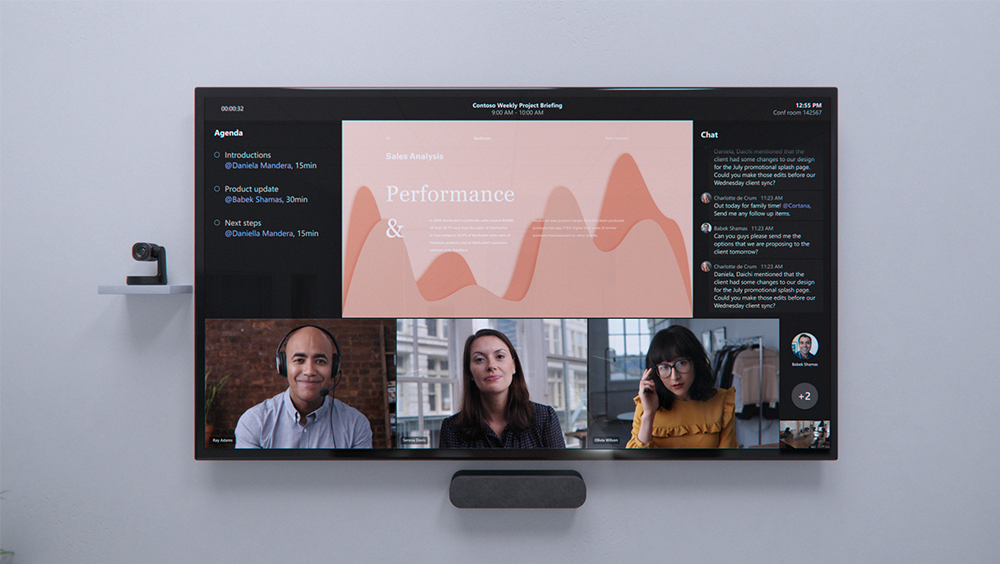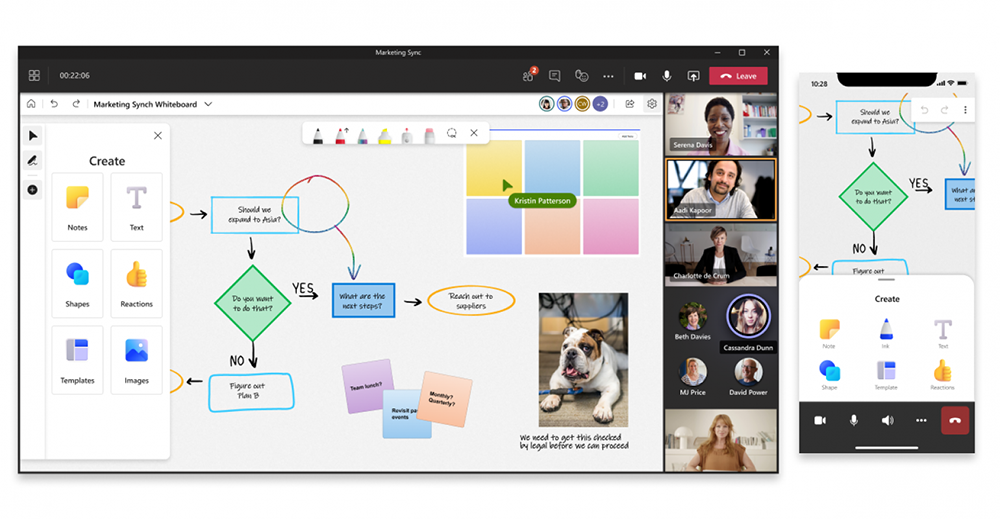New hybrid work innovations in Microsoft Teams Rooms, Fluid, and Microsoft Viva
As workplaces open in many regions around the world, people can’t wait to get back to in-person collaboration. But even more than getting back that personal touch, we look forward to finding new ways to help people connect and engage regardless of location and time zone. Microsoft believes that hybrid work is the future of work and that to empower their people to succeed in hybrid work, business leaders will need to reimagine their organizations with a new operating model for people, places, and processes.
Microsoft Teams is mission-critical to this vision for a more flexible world of work. Teams is unique in that it brings together meetings, chat, calls, collaboration, and business process automation in a single app. Since COVID-19 spurred office workers around the world to work from home, Microsoft has been innovating in Teams to do things like create more natural and engaging meeting experiences—enable people to connect seamlessly with those inside and outside of their organizations and provide ways to make remote presentations richer and more impactful. And to make it easier to collaborate synchronously and asynchronously, Microsoft announces new Microsoft Fluid canvas innovations—in Teams and beyond.
Participate on equal footing—at home, onsite, or on the go
Unlocking better hybrid meeting experiences for everyone begins with designing for the people who aren’t in the room, so that everyone feels like they have a seat at the table, whether they’re joining in the room, at home, or on the go.
You can start making hybrid meetings better today with a few good habits that put everyone on equal ground. Microsoft has collected and published some best practices for hybrid work meetings. These include: joining the Teams meeting even if you’re attending in the room; appointing an in-room moderator to facilitate conversation and track participation; and encouraging in-room participants to turn on their camera (provided they’re comfortable doing so) so that they’re more visible to remote participants.

To help remote participants establish their presence in the room and maximize inclusion, Teams Rooms will expand screen real estate using new video layouts that disperse the video gallery across multiple displays when content isn’t shared. The increased space means remote participants show up larger and more true to life. They’re also bringing more features from desktop to Teams Rooms, to help bring attention to the remote participants engaging in the meeting. These features include live reactions, spotlight, and the ability to pin multiple video streams and chat bubbles when using the classic video grid layout.

To empower remote participants to initiate and facilitate whiteboard sessions, a completely new, hybrid work-focused Whiteboard experience has been created, where all attendees can visually collaborate across the same digital canvas. New features will enable anyone to bring existing content to Whiteboard to co-author; and new templates will help groups start ideating faster, improving their ability to follow along with contributors, and more.
Effective hybrid meetings require every participant to be able to present, and experience a presentation in a way that’s engaging and inclusive. New PowerPoint Live features help create a shared space for collaboration and contributions from everyone in the meeting. With the new inking experience, you can annotate your PowerPoint as you present—or use a laser pointer to call attention to key points.
And look for these latest features in the Teams mobile app as well. You can now access PowerPoint Live and Dynamic view on your mobile devices. Custom background is also now on iOS and coming soon to Android.
Collaborate in the flow of work
To work effectively in hybrid and asynchronous models, people need a super-rich canvas that both creates and maintains context before, during, and after the meeting. Fluid components are atomic units of productivity that help you get your work done in the context of chat, emails, meetings, and more. Recently, Microsoft announced new Fluid components in chat to create live, collaborative experiences that can be edited in real-time and shared across Teams and Office apps. They also announced the expansion of Fluid components for Teams meetings, OneNote, Outlook, and Whiteboard that make it easier to collaborate synchronously and asynchronously across Teams and Office apps. New chat features that further support asynchronous collaboration, so you can keep the work moving forward in between meetings have also been announced. Pin a message, providing your chat members with quick access to critical content anytime, and reply to a specific chat message maintaining context within the ongoing conversation.
Meetings have increased significantly over the past year, along with unstructured communications. To help manage this digital overload, new Fluid components in Teams meetings make it easy to co-create an agenda, take notes, and assign tasks, right within the Teams meeting, and access persistent recap content whenever you need it. And the note, agenda, and tasks from meetings will be automatically “placed” in the new meeting notes home of OneNote. While the meeting is underway, take the discussion a step further by ideating and brainstorming together by creating and editing live Fluid components in Whiteboard. Fluid components can also be leveraged across Outlook—in email or the calendar—making it easier to manage your time, agenda, notes, and tasks across apps.
Source: Microsoft
